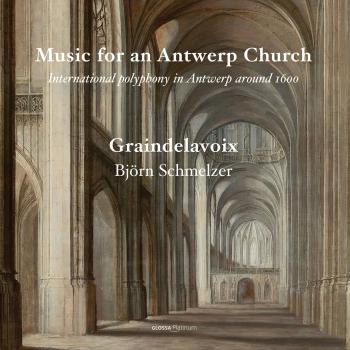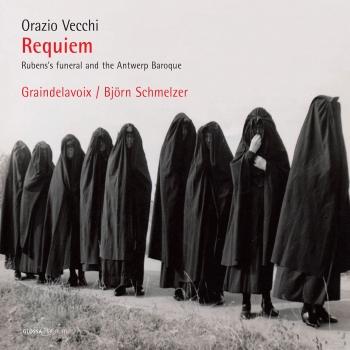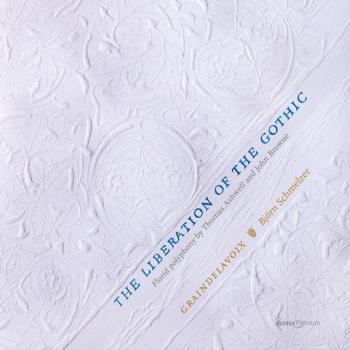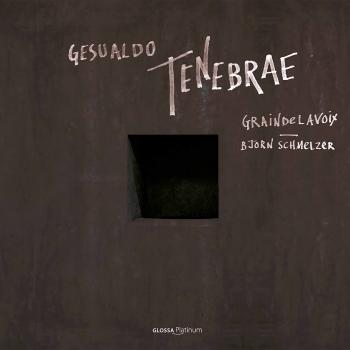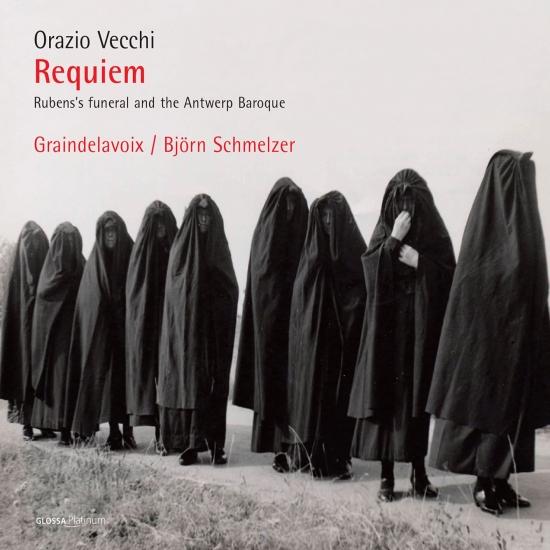
Vecchi: Requiem – Rubens's Funeral & The Antwerp Baroque Graindelavoix & Björn Schmelzer
Album info
Album-Release:
2017
HRA-Release:
24.03.2017
Label: Glossa
Genre: Classical
Subgenre: Vocal
Artist: Graindelavoix & Björn Schmelzer
Composer: Orazio Vecchi (1550-1605)
Album including Album cover Booklet (PDF)
- Orazio Vecchi (1550-1605):
- 1Missa "Pro defunctis": Requiem aeternam05:18
- 2Missa "Pro defunctis": Kyrie03:13
- 3Missa "Pro defunctis": Si ambulem02:29
- 4Missa "Pro defunctis": Dies irae11:44
- 5Missa "Pro defunctis": Domine Jesu Christe03:20
- 6Missa "Pro defunctis": Sanctus02:02
- 7Missa "Pro defunctis": Agnus Dei02:31
- 8Missa "Pro defunctis": Lux aeterna02:17
- Paolo Bravusi (1586-1630):
- 9Missae senis et octonis vocibus: Libera me Domine03:59
- George de La Hèle (1547-1586):
- 10Missa "Praeter rerum seriem": Kyrie06:48
- 11Missa "Praeter rerum seriem": Sanctus07:23
- 12Missa "Praeter rerum seriem": Agnus Dei05:38
- Pedro Rimonte (1565-1627):
- 13Missa "Ave Virgo Sanctissima": Missa Ave Virgo Sanctissima: Agnus Dei05:22
- Duarte Lobo (1565-1646):
- 14Missa "Dum aurora": Missa Dum aurora: Agnus Dei04:49
Info for Vecchi: Requiem – Rubens's Funeral & The Antwerp Baroque
For his latest Glossa album with Graindelavoix, Björn Schmelzer takes his lead from the funeral rites for the Flemish Baroque painter Peter Paul Rubens in 1640 – which might well have encompassed the Requiem Mass by Orazio Vecchi as recorded here – to demonstrate the coexistence in Baroque Antwerp of two apparently contradictory, but interconnected facets.
One of these facets was the continuing presence of prima prattica polyphony; the city was a major centre for music printing and Vecchi’s Requiem was brought out there – as were works by other composers represented on this disc: George de La Hèle, Duarte Lobo and Pedro Ruimonte (the recording ends with three successive Agnus Deis!). The other facet is that of the image of Rubens’s art: full of energy, seductive, optimistic and scintillating. The Northern Baroque par excellence.
With his recording, intriguing booklet essay (about the “Baroque in disguise”) and selection of pictorial images, Schmelzer encourages the listener/reader to enter into this strange world of artistic clashes and ruptures – not least the fact that Vecchi, a composer better known for his secular music popular in Venice, would have had his stile antico sacred music performed in Antwerp. This is achieved with Graindelavoix’s customary uncompromising – and clearly provocative – vocal sound, complete with both artfully-executed ornamentations and attention to ensemble needs.
Graindelavoix
Björn Schmelzer, direction
Graindelavoix
is much less an early music ensemble and much more an art collective experimenting between the fields of performance and creation, comprising singers and instrumentalists led by Björn Schmelzer. Taking its name from an essay by Roland Barthes (“le grain, c’est le corps dans la voix qui chante, dans la main qui écrit, dans le membre qui exécute...”), where Barthes was looking for what constitutes the gritty essence of a voice, Graindelavoix experiments with what one does with the “grain”, the physical and spiritual reflection of the voice.
Formed in 1999 by Schmelzer and based in Antwerp in Belgium, the collective works with material as diverse as Ockeghem’s polyphony, the plainte, machicotage, Mediterranean practices, late scholastic dynamics and kinematics, the affective body, gesture and image culture... What is preoccupying Graindelavoix in early music is the bond between notation and what eludes it: the higher consciousness and savoir-faire that the performer brings to a piece (ornamentation, improvisation, gestures...). Schmelzer works with singers and instrumentalists who embrace diversity, heterogeneity, ornamentation and improvisation in their music-making. In many ways, an ethno-musicological approach to early music.
Graindelavoix is a “special guest” at the Muziekcentrum De Bijloke in Ghent and has an artistic partnership with the Cultuurcentrum in the further Belgian city of Genk.
In Poissance d’amours Schmelzer – an ethnomusicologist by training – explores the music and writings of mystics, monks and minstrels active in 13th century Brabant for Glossa. This release and the recordings of music composed by Johannes Ockeghem (Caput) and Gilles Binchois (Joye) are allied to performances – in concert and music theatre formats – that are the accumulated fragments of a wider work and research process. Graindelavoix is offering a challenging new insight into the performances of music from the past.
Björn Schmelzer
studied anthropology and musicology but as a multidisciplinary artist he is primarily self-taught. He is the founder and artistic director of graindelavoix, an artist company that starts from folds and faults in ancient repertoires to rehabilitate the fundamental anachronism of practices in time. From this point of view, graindelavoix brings together artists of all disciplines: musical, visual and performative…Over the course of long research stays, Schmelzer studied primarily in the Mediterranean world, in Italy (Sardinia, Sicily), Spain, Portugal and Morocco, specializing in vocal repertoire and performance practice. He studied several medieval vocal traditions in depth, their continuation and survival in later times, ornamentation styles, and the logic of operative knowledge. He combines this work with insights from anthropology, history, human geography and ethnomusicology, resulting in various publications and concert programs. He is regularly requested as a guest conductor and lecturer. Björn Schmelzer has published several essays and articles for literary magazines, specialized magazines, academic publications and exhaustive CD booklets. He is currently writing a book about vocal practices, derived from 10 years of expertise with graindelavoix. With graindelavoix he has received several prizes and awards such as 'Young Musician of the Year' by the Belgian Music Press.
In 2011, Schmelzer became the first "Creative Fellow in Musicology", a collaboration between the Utrecht Early Music Festival and the Centre for Humanities at Utrecht University. Besides his activities as artistic director of graindelavoix, he makes films, both fictional and documentary, often associated with graindelavoix projects. As a playwright and director, he created, among others, Cesena with Anne Teresa de Keersmaeker, Muntagna Nera with Filip Jordens and Jan Van Outryve, Ossuaires with Koen Broos and Wim Scheyltjens and Trabe Dich Thierlein! with Margarida Garcia, Koen Broos and David Hernandez. Most recently, he designed audio-visual and interdisciplinary installations with Koen Broos and Margarida Garcia in The Hospital of Undersized Gestures.











